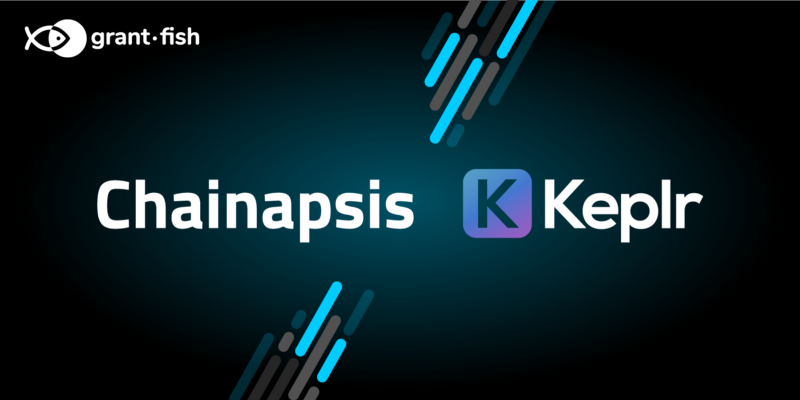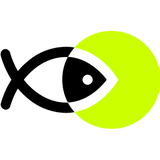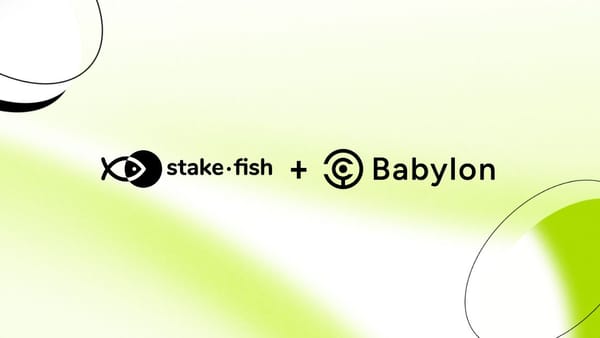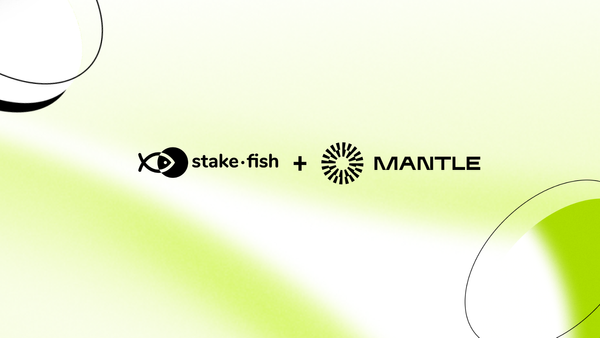grant.fish Update: Chainapsis
Since our last interview, Chainapsis has continued to pursue more adoption in the Cosmos ecosystem with their now very popular Keplr…

Last summer, we published interviews with the two grantees in our grant.fish program. If you’re not familiar, grant.fish is our vehicle for funding public goods that stand to benefit the entire Cosmos ecosystem and may be challenging to find funding for via traditional, for-profit avenues. We set aside some of the revenue we receive from running our Cosmos staking service for this purpose.
Chainapsis, led by Josh “dogemos” Lee and Tony Yun, aims to boost adoption by building Keplr, an easy-to-use browser wallet akin to Ethereum’s MetaMask. Check out our first interview with the Chainapsis team here.
We caught up with Josh Lee again, who gave us some updates on the team’s road to adoption and how they’re overcoming the unique funding challenges public-goods-focused projects often face.

Last time, we talked a lot about how adoption is your primary goal, both user adoption and developer adoption. What successes have you seen in this direction?
Just looking at the numbers here, the last interview was published on June 19, 2020. At that time, we had 137 users. Today, we are at 33,730 users. It’s amazing, yeah. I guess I hadn’t really looked at the numbers, so it’s like 246 times from where we were.
And on the developer adoption side, are you seeing a lot of activity?
Yes, absolutely. I think one of the biggest validations we had initially was during Hackathon V. We finally started seeing people using Keplr as a way to demo their blockchains. We saw several projects that integrated Keplr and presented that in the demo. A couple of months ago during the UnifiDAO demo day, where a lot of mainnet projects undergoing development showcased their work, almost half of them were either already supported by Keplr or were doing testnet transactions on Keplr.
We’ve actually put together API documentation so people can integrate Keplr into their apps a lot more easily. Before, I think it was just a blob of code we referred people to, so that’s a pretty significant improvement. Even beyond that, some projects are using the “Suggest Chain” feature, where they don’t even have to ask us permission to use Keplr. All their users can basically get Keplr wallet access in just two clicks, so that’s pretty amazing.
Just seeing a lot of new chains use Keplr as they’re bootstrapping their wallet interface is great. It’s even way beyond what I expected last year when we were just trying to find users.
We talked last time about what kinds of projects you foresaw arising in the Cosmos ecosystem. By now, there should be a lot more progress on that front.
We’ve definitely seen a lot of projects that were announced around the time of our last interview finally build out the blockchain launch, have a decentralized set of validators, start having users, and just being able to do a lot more than just sending tokens and staking. I think that’s pretty cool. I’m seeing people hosting their personal webpages on Akash. People are making Starnames. Secret Network has their entire privacy smart contract virtual machine, where users are accessing a host of DeFi applications that have privacy and frontrunning prevention built in by default. And now we finally have IBC, five years in the making.
I got to make the first mainnet IBC transaction, which was pretty awesome, and what was even more awesome is that it wasn’t even done on a CLI. I got to do it all on Keplr. That’s insane because this is actually something I was waiting for since 2017, just as a Cosmos enthusiast. Never in my wildest dreams did I think I’d be making the first IBC transaction on a wallet that I helped make.
How did our grant help you develop your project?
For the majority of the early Chainapsis team, it was just Tony and I. We actually didn’t take any of the money for ourselves because we wanted to make sure we saved it so we could find other developers rather than paying ourselves for it. Now we have a team of six full-time employees, three of them developers, and one part-time developer as well. To be honest, I think a vast majority of that was thanks to that kind of financial stability that grant.fish was able to provide.
It also saved me a lot of time, especially early on when it was very clear that we had a lack of resources. Obviously, one way to sustain ourselves would be to find investors. For me, that’s not my strong suit, or something that I personally really enjoy. I love building products, I love designing stuff, trying to find new features to add and stuff like that. That definitely allowed me to really focus more into the product and the features that we could provide rather than splitting my time between building something and also trying to find a way to fund it in the long run as well.
Any last remarks?
This is an interesting funding mechanism I really hope a lot more networks adopt.
As much as we think that would be awesome and any extra income would help, for a growing small team with a huge backlog of feature requests and bugs to squash, the additional task of having to run a validator is pretty significant for us.
But this type of infrastructure definitely helps alleviate some of the work that needs to go there, and at the same time from the Foundation side, it’s a pretty good low-effort, low-energy kind of way to support infrastructure that’s beyond validators and staking. I think right now a lot of Proof of Stake networks are focused on incentivizing staking infrastructure, while there is a lack of emphasis on the user infrastructure and the developer infrastructure, which I think is something that Keplr provides. Vitalik pointed this out on one of his latest blog posts, and I think it’s something more networks will begin to think more about as they grow out of the bootstrapping phase into the growth phase. I’d love to see more networks adopt this type of framework where staking infrastructure can be used as a way to support and bootstrap user infrastructure and developer infrastructure.
About stakefish
stakefish is the leading validator for Proof of Stake blockchains. With support for 10+ networks, our mission is to secure and contribute to this exciting new ecosystem while enabling our users to stake with confidence. Because our nodes and our team are globally distributed, we are able to maintain 24-hour coverage.
Website: https://stake.fish
Telegram: https://t.me/stakefish
Twitter: https://twitter.com/stakefish
Instagram: https://www.instagram.com/stakedotfish





